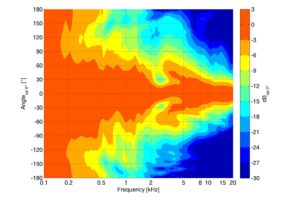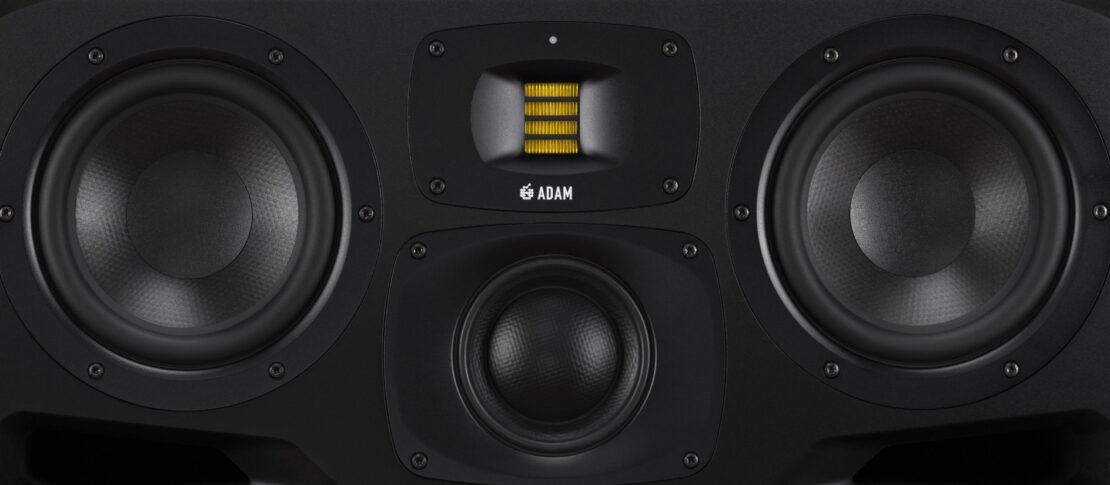
What’s The Story With Multiple Drivers? [Part 2]
We described in a recent blog post the physics behind the need for high performance professional monitors to have two or more drivers. So, in this blog post we’re going to take that subject further to explain the why there comes a point in monitor design where three (or more) drivers are even better than two.
We’ll start however with a quick recap of that earlier blog post. In a nutshell, multiple drivers are needed to cover the full audio band for three fundamental reasons:
- Cone area: reproducing bass at audible levels requires a significant volume of air to be moved, and increasingly so as frequency reduces.
- Mechanical strength: large cones aren’t rigid enough to move as a whole at high frequencies.
- Directivity: large cones become impractically directional at higher frequencies.
While the laws of physics, as configured in our universe, mean that single driver speakers can’t reach the kind of performance necessary for professional monitoring, those same laws are at least kind enough to allow it to be done with two drivers. But even that is a stretch, because using two drivers to reproduce the frequency range audible to humans from 20 Hz to 20 kHz still leaves us with a few challenges. Those challenges are generally to be found at the top end of the frequency band covered by the bass/midrange driver and at the bottom end of the band covered by the tweeter (which usually overlaps to a certain extent in the crossover region).
The woofer
We’ll cover the first of those to begin with. We described in the earlier blog post how a phenomenon called cone break-up occurs. This is where the acceleration required of a bass/midrange cone as frequency rises exceeds its ability to resist bending. The cone begins to lose its shape and, as a result, errors potentially arise in the monitor’s frequency response. However, we also described in the earlier post how, at higher frequencies, as wavelength becomes comparable to cone diameter, drivers become directional.
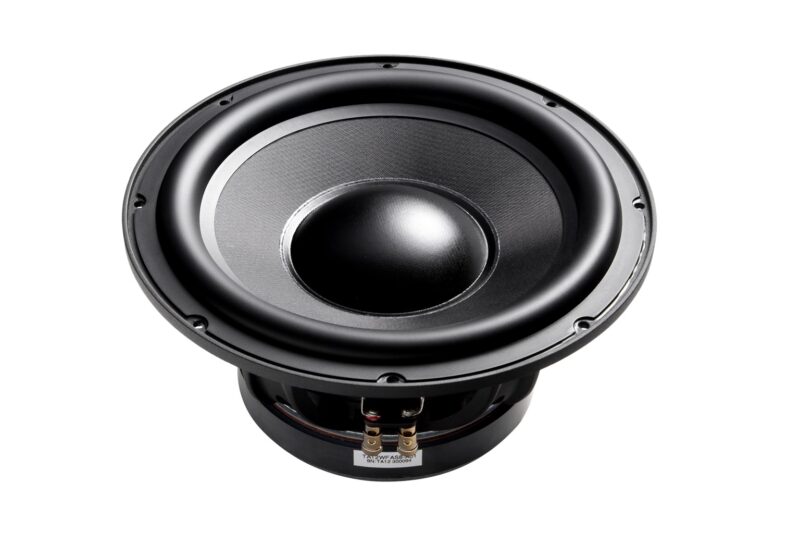
A powerful 12″ woofer that allows the S5V main monitor to go as low as 25 Hz
In these circumstances, break-up can actually be useful to counteract directionality as, if managed skillfully, it can result in the effective radiating diameter of a cone reducing. Managing cone break-up in this way to turn it to advantage is a matter of carefully specifying the cone profile, material, and geometry, and engineering the driver’s roll-surround to offer just the right ratio of compliance to damping. It’s a significant factor in making two-way monitors feasible.
The tweeter
A second challenge of two-way monitors is to engineer a high frequency driver (tweeter) that can cover the frequency band from where the bass/midrange driver cone break-up and directionality finally become unworkable, typically between 2 kHz and 3 kHz, to the limits of audibility at 20 kHz (and sometimes beyond, which our X-ART tweeter is more than capable of). To be able to generate sufficient acoustic energy as high as 20 kHz, tweeter diaphragms need to be very light; between 0.2 gramme and 0.4 gramme is typical for a traditional dome tweeter.
However, to also be able to generate sufficient acoustic energy at the low end of the frequency band, without its diaphragm having to move more than say, ±0.5 mm, a tweeter needs a minimum diaphragm area of around 175 mm². Those two requirements; light weight and minimum diaphragm area, can only be met by a relatively narrow range of dome materials and tweeter design techniques. There’s also a further potential problem, located not far from the low limit of the tweeter band, where the combination of the low diaphragm mass and its suspension typically result in a significant diaphragm resonance. The crossover from the bass/midrange driver to the tweeter ideally needs to be at least an octave, and preferably more, above the tweeter resonance, and that’s often a challenge for the bass/midrange driver.
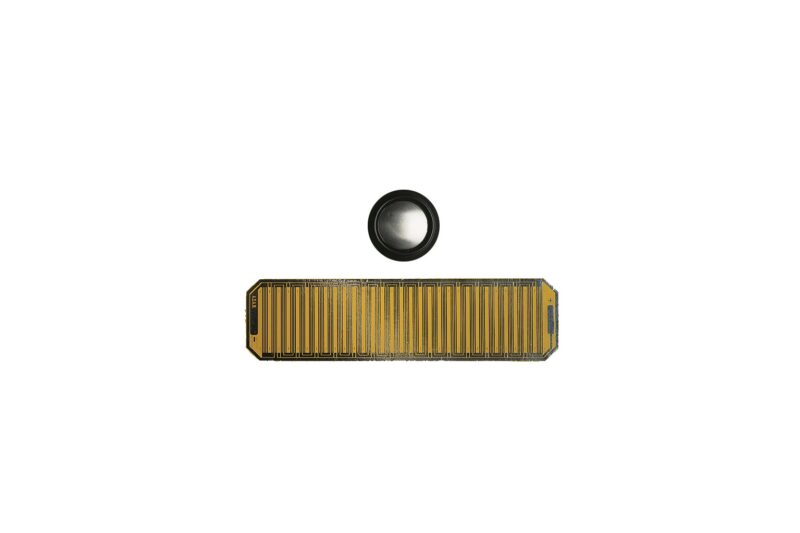
Size comparison between diaphragms of a traditional dome tweeter and the X-ART tweeter.
Although the challenges of two-way monitors generally apply to all types of tweeters, we’ve really considered in that last paragraph just traditional dome tweeter designs, however ADAM Audio monitors employ a very different kind of tweeter; the X-ART (and its U-ART and S-ART derivatives). Unlike traditional dome drivers, X-ART tweeters employ a pleated diaphragm that draws air in and out of its pleats as they move apart and together in response to the audio signal. This technique can generate four times as much air movement as a comparable dome-based driver and this, among other things, overcomes some of the challenges that characterize dome tweeters at the low end of their operating band.
The midrange driver
So, extending bass/midrange driver frequency response upwards, and tweeter frequency response downwards, so that they integrate at the crossover frequency without compromise is challenging. Imagine two people stretching arms to pass a parcel and only just making it. You’d probably suggest a third person to help, and that’s the role of the midrange driver in three-way monitors. However, a midrange driver more than simply fills a potential performance gap between the bass/midrange driver and the tweeter; it enables all drivers to be designed more appropriately for their primary role.
For example, when relieved of midrange duties, a bass/midrange driver (now simply a bass driver) can be optimized for low frequency reproduction. Gone is the need to manage cone break-up and directivity by carefully juggling diaphragm mass, damping and rigidity, and gone is the need to engineer the driver roll-surround to provide optimum mechanical characteristics at midrange frequencies. “It’s all about the bass”, and that means bass performance can be improved. The tweeter of a three-way monitor can similarly be optimized for high frequency performance, but furthermore, by enabling a higher tweeter crossover frequency, a midrange driver can effectively aid tweeter performance by reducing its load: thermal compression (falling driver output as voice-coil resistance increases with temperature) and distortion will both then be reduced.
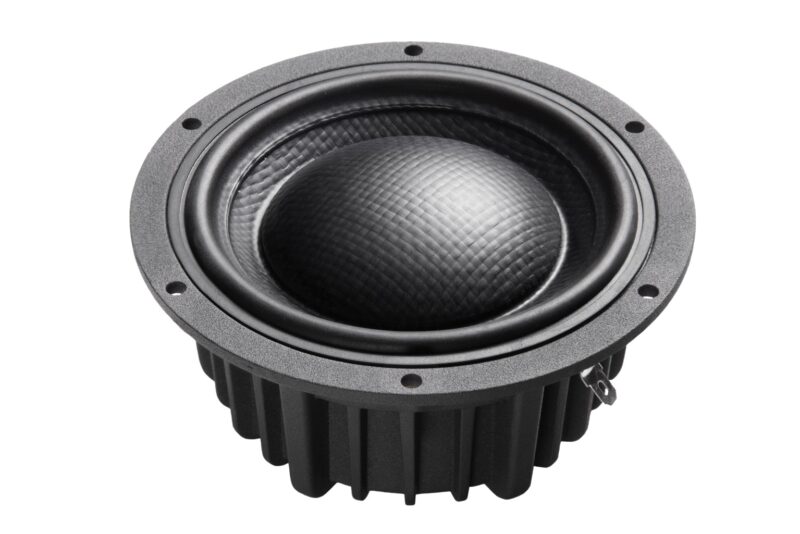
The dome-cone-hybrid (short: DCH) midrange driver used in the S Series
Midrange drivers typically come in two different forms: small cone drivers designed for midrange, and dome drivers that, in conceptual terms, are larger versions of dome tweeters. At ADAM Audio, we have developed a unique hybrid design to combine the advantages of both forms: a truly exceptional wide band, low distortion, and minimal coloration midrange performance. This driver was first employed in all three-way monitors from the S Series. A close relative can be found in the A77H and A8H monitors of the more recent A Series.
More ways to discover?
Having established the three-way idea that splitting the full audio band into smaller chunks enables drivers to be optimized for better performance over a narrower range of frequencies, it’s not a huge leap of imagination to see how more band splitting might be advantageous. For example, four-way monitors typically split the low frequency band into upper and lower bass. The low bass driver can then be optimized for subwoofer frequencies below, say, 80 Hz, leaving the upper bass driver free to be optimized for the band up to around 350 Hz, where an optimized midrange driver can take over. And even five-way monitors, in which the tweeter band is typically split at around 8 kHz are not unheard of. Eventually however, band splitting and more drivers hits a point where, mostly due to cost, the sheer cabinet size and the complexity of crossover filtering, the performance returns diminish.
There are really not many six-way monitors around, while two- and three-way design remain most common.
![What’s The Story With Multiple Drivers? [Part 1]](https://www.adam-audio.com/blog/wp-content/uploads/resized/2024/01/adam-audio-blog-learn-whats-the-story-with-multiple-drivers-header-thumbnail-300x200-c-default.jpg)
